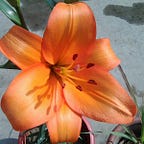A Visit to the Beetle God!
A once-holy beetle, villainized by the movie “The Mummy”
I saw the movie “The Mummy” long ago. Ancient Egypt fascinated me so the movie was an instant favorite. A curious part of the movie was the flesh-eating bug. The movie showed a swarm of fast-moving beetles that would enter the body of its ill-fated human victim. Within seconds they would devour the person inside out. In a sense, they were more dangerous than the villain.
At first, I dismissed the beetle as a Hollywood flight of fantasy. But later I found a picture of the bug in a book on ancient Egypt. This piqued my curiosity. After some reading, I found that it was a harmless creature — a dung beetle (Scarabaeus sacer), commonly known as Scarab.
The Egyptian fascination with Scarab
The scarabs are somewhat secretive. To a naïve observer, various stages of a scarab’s life may be unclear. These beetles live for three years. The adults derive all their nutrients from the dung. Scarabs use their head and hind legs to shape dung into a sphere. They then push this dung ball with their back legs, keeping their head and a front leg on the ground. They are incredible navigators. They use the sun as a reference point and can escape quickly. During the night they navigate using the moon. On moonless nights they navigate using the milky way (Dacke et al. 2013).
Ancient Egyptians observed the scarab very minutely. They visualized that a huge scarab moved the sun from the eastern horizon to the west in the day and through the underworld at night. Khepri or the early morning Sun God was pushed over the horizon by the scarab. The life of the scarab was a mystery for the Egyptians. For them, an adult beetle would disappear underground with its dung ball. After some time, a young beetle would emerge. This made them believe that the male beetles could reproduce without the females.
Beetles as religious symbols
The ancient Egyptians believed the sun to be God. It made sense since life on earth would be difficult without the sun. For them, the movement of the sun from east to the west daily was a mystery. They had named the morning sun Khepri, the midday sun Ra and the evening sun Atum.
Scarab was thought to symbolize Khepri. Like the Sun God, the young beetles would emerge from the earth and not eggs or larvae. Khepri was an ancient God, worshiped since at least the fifth dynasty. Likewise, scarabs have been considered holy for a long time. Scarab-shaped objects have been found from the early Neolithic period (7000–5000BCE).
The God that’s a Scarab
Khepri was idolized as a deity with a scarab like a face. He represented creation, rebirth, immortality, transformation, and protection. In some tomb’s paintings and funerary papyri, he was represented as a man with a scarab head, or as a scarab with a male human head, emerging from the beetle shell.
Egyptian theologists wondered how the dead would answer difficult questions in the afterlife. The scarab was their solution. A priest would whisper the likely questions and their answers to the scarab, mummify it and keep it in the ear of the dead. If questions were asked, the scarab would whisper the answer in the ear of the body. Scarab-shaped jewelry was buried with the body, in the form of amulets having two large wings.
The scarab at Karnak
I wanted to visit Egypt to see the early civilizations' fascination with Scarab for myself. I got a chance in 2019. A part of that visit is here –
After the early morning balloon ride, we visited the valley of kings and the tombs of various pharaohs. These tombs were decorated with paintings of the scarab. Even the markets in Luxor were flooded with scarab-motif arts, jewelry, and other souvenirs.
We also visited the Karnak temple, located on the east bank of the Nile in Thebes. The temple complex comprises of sanctuaries, temples, pylons, and obelisks. The sanctuary was started somewhere in 2000–1700 BC. Construction continued up to 305–30 BC. Various Egyptian kings left their architectural mark at the site. It is the largest religious place ever built in the world. In the center of the complex is the Hypostyle Hall with 134 gigantic stone columns. Various movies have been shot at this site. There is also a sacred lake that was used for ritual washing and navigation.
I was surprised to see a huge granite statue of a Scarab on a high platform near the lake, dedicated by Pharaoh Amenhotep III to Khepri. The statue was cordoned off to prevent visitors from touching it “for luck”. People still circumambulated it to get their wishes fulfilled. I followed suit. As I walked, I could see two obelisks, standing tall against the blue sky. They appeared to be the same in size, while being unequal, giving an amazing feel.
Are beetles shown in the mummy film real?
The beetles in the film are in no way real dung beetles. Real-life beetles are slow-moving and coprophagous. Their lives revolve around animal feces and not human flesh. These are harmless creatures that can tolerate the scorching Egyptian sun while increasing the fertility of the land.
In a sense, they also show man’s forever fascination with nature and the early seeds of religion and philosophy. So, very different from the flesh boring horrors of the movie!
